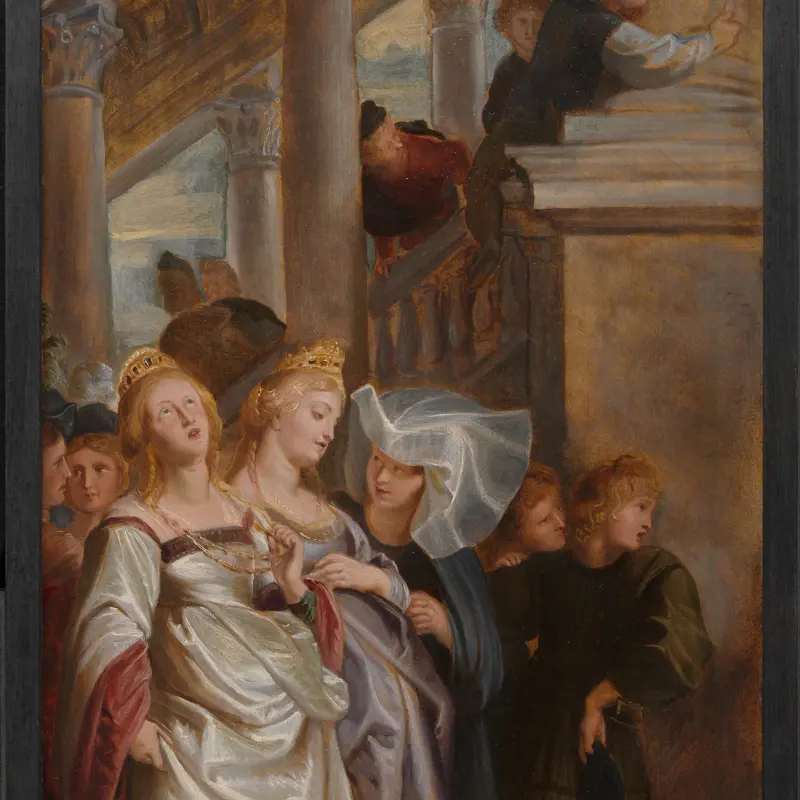Peter Paul Rubens, 'The Brazen Serpent', probably 1635-40
About the work
Overview
Moses stands on the left, his hand raised as he beckons people to gaze upon the bronze serpent coiled around the pole held by Eleazar, a priest. The scene is taken from the Old Testament: God had sent a plague of ‘fiery serpents’ to punish the Israelites for their sinfulness and lack of faith (Numbers 21: 6), but anyone who followed Moses' instruction would be protected.
While some try to struggle out of the grips of the snakes, one figure – a woman in the black dress at the centre of the group – stares intently at the bronze serpent and so remains unharmed. She is probably based on Rubens’s second wife, Hélène Fourment.
Rubens made this picture with the help of some of his studio assistants. They may have used a modello (a sketch used as a guide for a painting) to block out the composition before Rubens painted in the details.
Key facts
Details
- Full title
- The Brazen Serpent
- Artist
- Peter Paul Rubens
- Artist dates
- 1577 - 1640
- Date made
- probably 1635-40
- Medium and support
- oil on canvas
- Dimensions
- 186.4 × 264.5 cm
- Acquisition credit
- Bought, 1837
- Inventory number
- NG59
- Location
- Room 18
- Collection
- Main Collection
- Previous owners
- Frame
- 17th-century English Frame
Provenance
Additional information
Text extracted from the ‘Provenance’ section of the catalogue entry in Gregory Martin, ‘National Gallery Catalogues: The Flemish School: circa 1600–circa 1900’, London 1986; for further information, see the full catalogue entry.
Bibliography
-
1986Martin, Gregory, National Gallery Catalogues: The Flemish School, circa 1600 - circa 1900, London 1986
-
2001
C. Baker and T. Henry, The National Gallery: Complete Illustrated Catalogue, London 2001
About this record
If you know more about this work or have spotted an error, please contact us. Please note that exhibition histories are listed from 2009 onwards. Bibliographies may not be complete; more comprehensive information is available in the National Gallery Library.




























